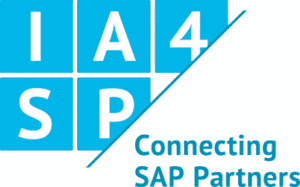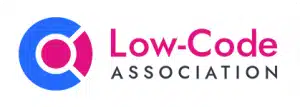Introduction
This documentation is divided into 2 parts:
- Part 1 describes the actual update of the containers and comes in two options
- Option 1 in case you use our recommended docker compose setup.
- Option 2 in case you have a custom setup. It describes the relevant changes that come with Simplifier 10 in a generic way.
- Part 2 describes steps which have to be done independently of the container orchestration mode.
Part 1: Upgrading Simplifier
Option 1: Upgrade using default docker compose
Step 1 – Shutdown Simplifier Instance
Go to the directory where you placed the docker-compose file. Switch into that folder:
cd docker-compose
To stop Simplifier, run
docker compose -f simplifier-standalone.yml down
Step 2 – Get Simplifier setup files
Update the content and switch to the new release branch:
git pull git checkout --track origin/release/LTS
The filename simplifier-standalone.yml was changed to docker-compose.yml to comply to the docker standards. You now can omit the -f <filename> parameter to execute docker compose commands.
Step 3 Update .env
There weren’t any additions or removals with this release. You can update the line
to
SIMPLIFIER_VERSION=10
and leave the rest unchanged.
Optional: a list of all env variables with a short description. Change these as needed.
|
SIMPLIFIER_HOSTNAME
|
Simplifier Hostname, FQDN, without protocoll. To access Simplifer, https://${SIMPLIFIER_HOSTNAME} needs to be used |
|
DB_PASSWORD
|
MySQL Database Password |
|
DB_ROOT_PASSWORD
|
Password for the MySQL root user |
|
DB_NAME
|
Database name for the Simplifier database. Used as prefix for all plugin/module databases. |
|
SIMPLIFIER_VERSION
|
Version of Simplifier you want to install. You should not change this. If you want to have another Simplifier version, please check out the appropriate branch instead |
|
HOST_DATA_PATH
|
Path were all data is stored in the host. |
|
PLUGINLIST
|
List of all plugins which should be started. Technically, the Workflow Engine is not a plugin, so it is not mentioned here |
|
SIMPLIFIER_JVM_HEAP_GB
|
How much heap space for Simplier App Server in GB |
|
TZ
|
Timezone. Only used in Workflow Context |
|
WF_RT_JVM_HEAP_GB
|
How much heap space for Workflow Runtime in GB |
|
WF_ARCHIVE_ENABLED
|
For archive related settings, please refer to this documentation. |
|
WF_ARCHIVE_INTERVAL
|
|
|
WF_ARCHIVE_MAX_AGE_COMPLETED
|
|
|
WF_ARCHIVE_TIME
|
|
|
WF_DT_JVM_HEAP_GB
|
How much heap space for Workflow Designtime in GB |
|
LAUNCHPAD_JVM_HEAP_GB
|
How much heap space for Launchpad in GB |
|
FEATURE_SSBO_JS_DEBUGGING
|
Should the experimental feature “Debugging of Server Side Business Objects” be enabled? (Read more) |
|
DEBUG_CHROME_DEV_TOOLS_EXPOSED_PORT
|
Port used to connect to the debugger. This port needs to be open in your firewall setup. (Read more) |
|
PDFPLUGIN_SECURITY_ALLOW_JAVASCRIPT
|
Should Javascript execution be allowed in PDF templates? (Read more) |
|
DYNAMIC_TAB_TITLES_ENABLED
|
Should the experimental feature ‘dynamic tab icons and tab titles’ be activated? (Read more) |
Step 4
Pull new images
docker compose pull
Start Simplifier
docker compose up -d
Option 2: Generic upgrade instructions, if you are not using our default docker compose setup
Step 1 – Configure monitoring database
Since release 8 EHP 2, monitoring data is moved to a separate database. This database must be a MySQL database and it may be on the same MySQL server as the main simplifier database, but also may reside on a different MySQL server. In either case, the connection has to be configured separatly.
To configure this database, the following environtment variables have to be set:
- MONITORING_DBMS=mysql // fixed string - MONITORING_DB_HOST=<hostname> - MONITORING_DB_PORT=<port> // by default MySQL uses 3306 - MONITORING_DB_USER=<dbUserName> - MONITORING_DB_PASS=<password> - MONITORING_DB=<databaseName>
The database has to be present on the configured MySQL server.
Step 2 – update reverse Proxy
Expand header access-control-expose-headers configuration
OData-Version needs to be added to access-control-expose-headers. The complete list is now
access-control-expose-headers: remainingTokenLifetime,OData-Version
Expand header access-control-allow-headers configuration
OData-MaxVersion, OData-Version have to be added to access-control-allow-headers. The complete list is now
access-control-allow-headers: DNT,X-CustomHeader,Keep-Alive,User-Agent,X-Requested-With,If-Modified-Since,Cache-Control,Content-Type,Authorization,SimplifierToken,SimplifierApp,SimplifierModule,SimplifierModuleInterface,SimplifierClientBusinessObject,SimplifierClientBusinessObjectFunction,sap-cancel-on-close,sap-contextid-accept,MaxDataServiceVersion,DataServiceVersion,Content-Length,SimplifierApiKey,OData-MaxVersion,OData-Version,MIME-Version,X-CSRF-Token
Step 3 – create shared folder
A new folder is necessary, which acts as a shared volume. E.g. you can create /var/lib/simplifier/shared:
mkdir /var/lib/simplifier/shared
You have to mount this path to the simplifier container and to the workflow designtime container.
For the Simplifier container:
/var/lib/simplifier/shared:/opt/simplifier/shared
For the workflow designtime container:
/var/lib/simplifier/shared:/home/workflowDesigntime/shared
You can change /var/lib/simplifier/shared to whatever folder you prefer. You must leave the mount targets /opt/simplifier/shared and /home/workflowDesigntime/shared unchanged!
Part 2: Doings after upgrade
Step 1: Update Simplifier Standard Content
Download the latest Standard Content from Marketplace and import it to your Simplifier Instance. Make sure using import scenarios ‘Overwrite all’ or ‘Skip unchanged’ (recommended).
Step 2: Implement Changes mentioned in Release and Migration Notes
Follow our Release Notes and Migration Notes and implement the necessary changes described there.











